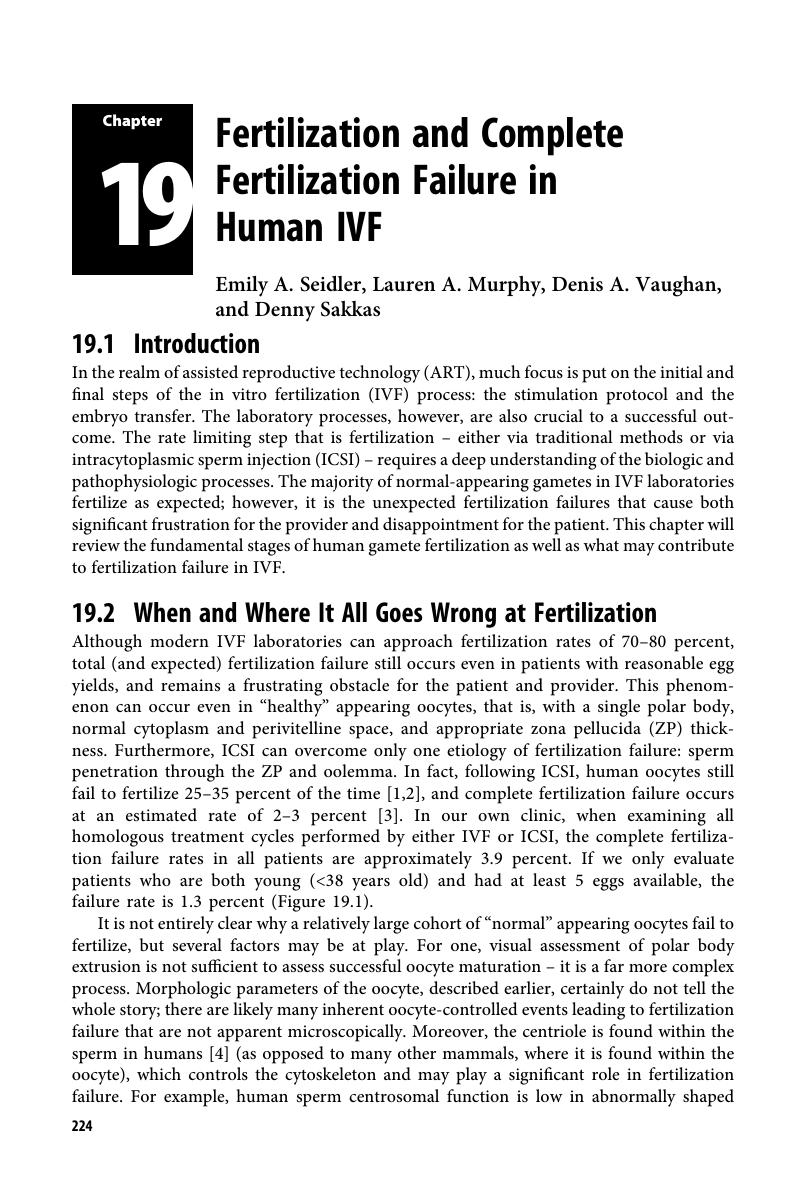Book contents
- How to Prepare the Egg and Embryo to Maximize IVF Success
- How to Prepare the Egg and Embryo to Maximize IVF Success
- Copyright page
- Contents
- Contributors
- Section 1 Oocyte Recruitment
- Section 2 Stimulation for IVF
- Section 3 Supplements to Improve Oocytes
- Section 4 Oocyte and Embryo Culture
- Chapter 17 In Vitro Maturation
- Chapter 18 Oocyte Banking through Vitrification
- Chapter 19 Fertilization and Complete Fertilization Failure in Human IVF
- Chapter 20 Physiology and Culture of the Early Human Embryo
- Chapter 21 Use of Medium Supplements for Oocyte and Embryo Culture
- Chapter 22 Assisted Hatching – Fresh and Frozen
- Section 5 Embryo Selection and Transfer
- Index
- References
Chapter 19 - Fertilization and Complete Fertilization Failure in Human IVF
from Section 4 - Oocyte and Embryo Culture
Published online by Cambridge University Press: 04 January 2019
- How to Prepare the Egg and Embryo to Maximize IVF Success
- How to Prepare the Egg and Embryo to Maximize IVF Success
- Copyright page
- Contents
- Contributors
- Section 1 Oocyte Recruitment
- Section 2 Stimulation for IVF
- Section 3 Supplements to Improve Oocytes
- Section 4 Oocyte and Embryo Culture
- Chapter 17 In Vitro Maturation
- Chapter 18 Oocyte Banking through Vitrification
- Chapter 19 Fertilization and Complete Fertilization Failure in Human IVF
- Chapter 20 Physiology and Culture of the Early Human Embryo
- Chapter 21 Use of Medium Supplements for Oocyte and Embryo Culture
- Chapter 22 Assisted Hatching – Fresh and Frozen
- Section 5 Embryo Selection and Transfer
- Index
- References
Summary

- Type
- Chapter
- Information
- How to Prepare the Egg and Embryo to Maximize IVF Success , pp. 224 - 231Publisher: Cambridge University PressPrint publication year: 2019



